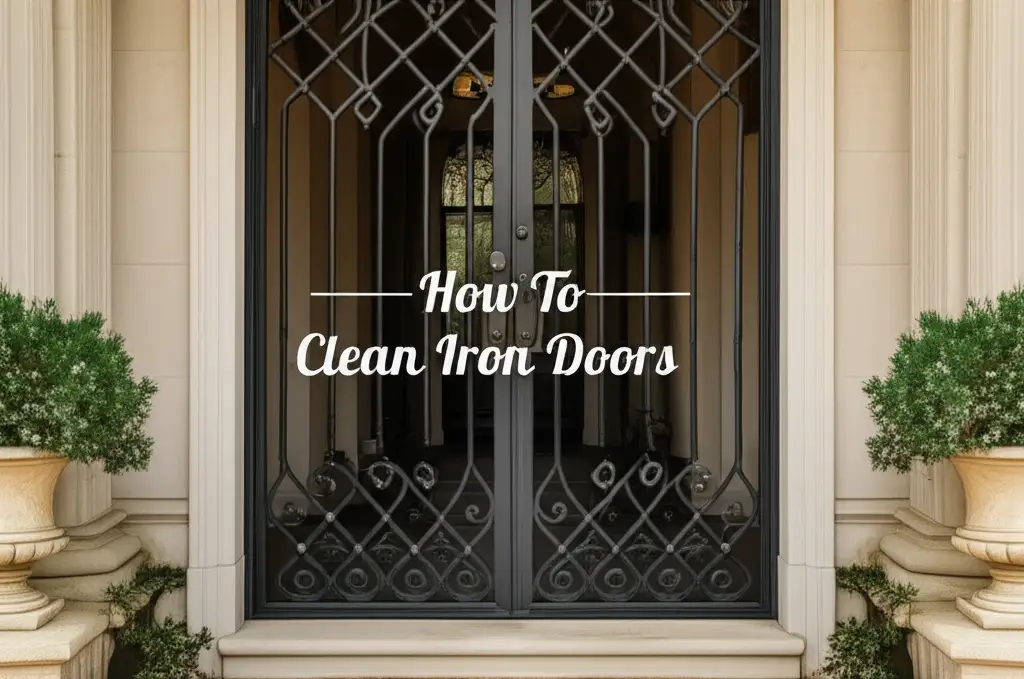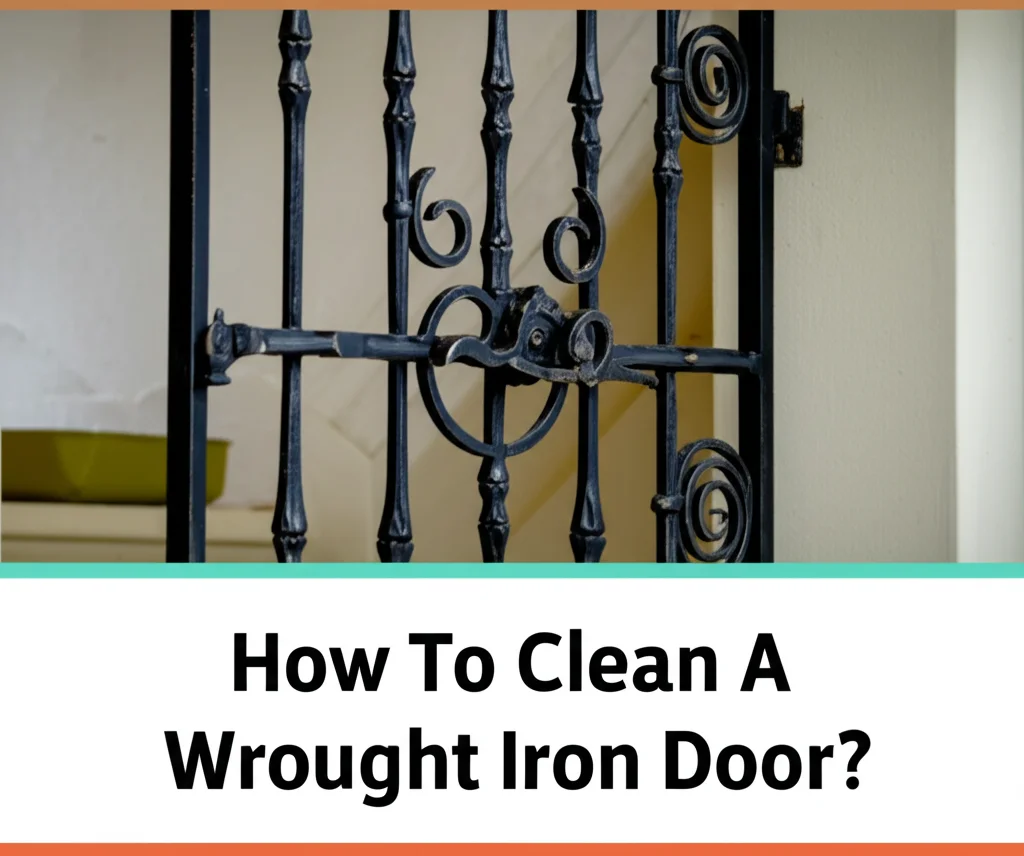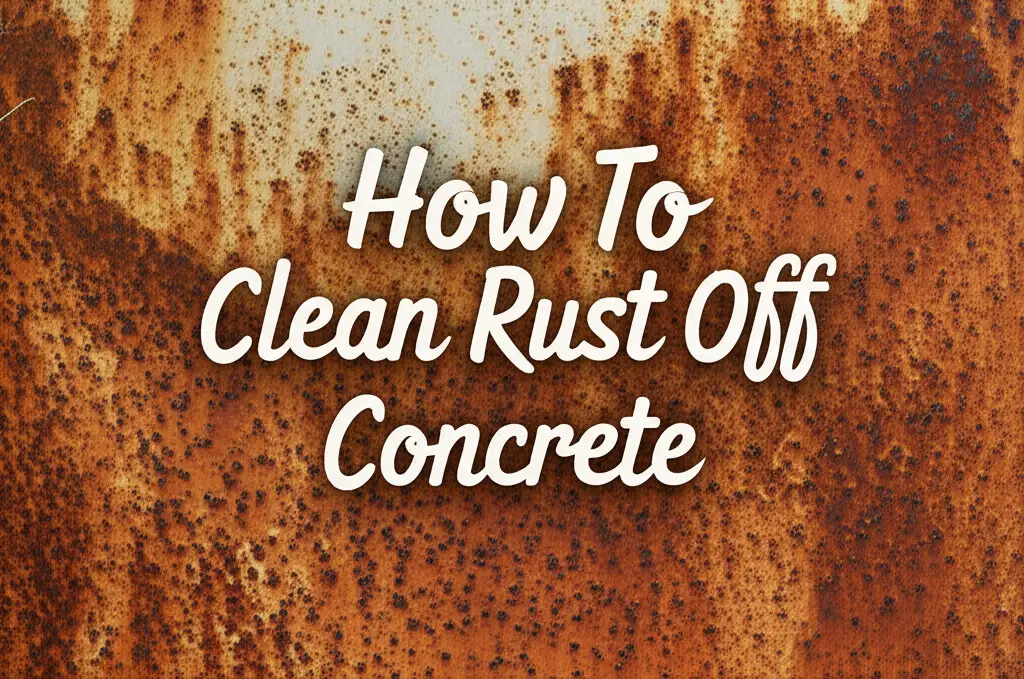· Home Maintenance · 15 min read
How To Clean Iron Doors

How to Clean Iron Doors for Lasting Beauty
Iron doors are a striking feature on any home. They offer unmatched strength and often have beautiful, intricate designs. However, these doors face constant exposure to weather, dust, and grime. Over time, this exposure can dull their finish and even lead to rust. Knowing how to clean iron doors properly is important for keeping them looking their best. It helps protect your investment and maintain your home’s curb appeal.
This article will guide you through the process of cleaning your iron door. We will cover everything from routine dusting to tackling stubborn rust. You will learn about the right tools and cleaning solutions. We will also discuss how to protect your door after cleaning. By the end, you will have a clear plan to keep your iron door shining for years to come. I am here to help you make your iron door look new again.
Takeaway
Keeping your iron door clean requires regular care. You must use the correct tools and methods for different types of dirt and damage. Here are the key actionable messages:
- Regularly dust and wash your iron door with mild soap and water.
- Address rust spots immediately with appropriate removers or tools.
- Protect the cleaned surface with wax, sealant, or paint to prevent future issues.
To clean iron doors, you should first remove loose debris. Then, wash the surface with mild soap and water. Rinse the door completely and dry it thoroughly to prevent rust. For rust spots, use specialized removers or a wire brush, then protect the cleaned area.
Understanding Your Iron Door: Types and Common Issues
Before you start cleaning, it is good to understand your iron door. Most iron doors are made from wrought iron or cast iron. Wrought iron is known for its decorative, hand-worked designs. Cast iron is heavy and often used for more solid, structured doors. Both types share a common challenge: rust.
Iron naturally reacts with oxygen and moisture. This reaction creates iron oxide, also known as rust. Rust appears as reddish-brown flakes or spots. It can weaken the metal over time if left untreated. Besides rust, iron doors can collect general dirt, dust, pollen, and even bird droppings. These substances can cling to the textured surface. They dull the door’s appearance and can trap moisture, speeding up corrosion. My goal is to help you understand these challenges and how to meet them head-on.
Different climates affect iron doors differently. In humid areas, rust forms faster. In dry, dusty regions, grime builds up quickly. Sun exposure can also fade finishes. Knowing your door’s material and local conditions helps you choose the best cleaning plan. For example, a wrought iron door with many scrolls needs different cleaning tools than a smooth, solid cast iron door. Recognizing these details prepares you for effective cleaning.
Understanding these factors is the first step. It ensures you use the correct cleaning methods. This knowledge helps protect your iron door for a long time. I find that preparation is key to any successful cleaning project.
Gathering Your Essential Cleaning Tools and Supplies
Having the right tools makes cleaning your iron door much easier and safer. You do not need many special items, but a few key things are important. First, you will need a soft brush or a vacuum cleaner with a brush attachment. This helps remove loose dirt and dust. A bucket for water and a few clean cloths or sponges are also essential.
For washing, a mild dish soap is usually enough. Avoid harsh chemicals or abrasive cleaners. These can strip the door’s protective finish. If your door has rust, you will need a wire brush or steel wool. Fine-grit sandpaper can also help with stubborn rust spots. I always recommend wearing protective gloves and eye protection. These items keep you safe from rust particles and cleaning solutions.
Here is a list of supplies I recommend you gather:
- Soft-bristled brush or vacuum with brush attachment
- Two buckets (one for soapy water, one for rinse water)
- Mild dish soap or pH-neutral cleaner
- Clean, soft cloths or sponges
- Old towels for drying
- Wire brush or steel wool (fine-grade) for rust
- Fine-grit sandpaper (optional, for tough rust)
- Rust converter or primer (for post-rust treatment)
- Clear wax, sealant, or outdoor metal paint (for protection)
- Protective gloves
- Safety glasses
- Garden hose with spray nozzle
For removing rust, remember that general cleaning principles for metallic items apply. You can find more specific advice on dealing with rust by looking at how to clean rust from cast iron. This link offers good information about rust removal on similar metal types. Having all these items ready saves time and ensures a smooth cleaning process.
Step-by-Step Guide to Basic Iron Door Cleaning
Regular cleaning prevents dirt and rust from building up. This basic routine can be done every few weeks or months. It depends on your door’s exposure to the elements. Start by removing any loose debris. Use a soft brush or a vacuum cleaner with an attachment to get into crevices. This initial step prevents scratching the finish during washing. I always begin with this simple dry cleaning.
Next, prepare your cleaning solution. Fill one bucket with warm water and add a few drops of mild dish soap. Do not use too much soap; a little goes a long way. Use another bucket with plain, clean water for rinsing. Dip a soft cloth or sponge into the soapy water. Gently wipe down the entire surface of the iron door. Pay attention to decorative elements where dirt can hide. For general cleaning of cast iron items, the techniques are often similar. You can find additional insights into cleaning sturdy metal surfaces by reading about how to clean cast iron sink.
After washing, rinse the door thoroughly with clean water. You can use a garden hose on a low setting or a fresh, damp cloth. It is important to remove all soap residue. Soap left on the surface can attract more dirt or cause streaks. The most important step after rinsing is drying. Use clean, old towels to dry the door completely. Iron can rust quickly if left wet. Pay special attention to corners and decorative parts where water can collect. My goal is to ensure your door is completely dry after washing.
Follow these steps for routine cleaning:
- Remove loose debris: Use a soft brush or vacuum.
- Prepare wash solution: Mix mild soap with warm water.
- Wash the door: Wipe all surfaces with soapy water.
- Rinse thoroughly: Use clean water or a hose.
- Dry completely: Use old towels; leave no moisture.
By following this simple routine, you keep your iron door looking neat. You also prevent more serious issues like rust from starting. This basic care extends the life of your door.
Tackling Rust and Stubborn Stains on Iron Doors
Even with regular cleaning, rust can appear on iron doors. It is important to treat rust spots quickly to prevent them from spreading. For light rust, you can often remove it with a wire brush or steel wool. Gently scrub the rusted area until the red-brown flakes are gone. Always move in the direction of the metal grain if possible. Be careful not to scratch the surrounding finish. I find that persistence is key when dealing with rust.
For more stubborn rust or areas with pitting, you might need fine-grit sandpaper. Start with a coarser grit and move to a finer one as the rust comes off. After sanding, wipe the area clean with a damp cloth. You can also use a specialized rust remover product. Always follow the product’s instructions carefully. These products often contain strong chemicals, so wear gloves and eye protection. For broader insights on challenging stains, considering how to handle very tough spots on similar materials can be useful. For example, learning about how to clean stuck on cast iron offers methods for extreme grime.
Beyond rust, iron doors can suffer from other stubborn stains. Paint splatters, sap, or heavy grime might stick to the surface. For paint, you can try gently scraping it with a plastic scraper. Be careful not to damage the underlying finish. Mineral spirits or paint thinner can help dissolve paint. Test these in an inconspicuous area first. For sap or sticky residues, rubbing alcohol can sometimes work. Apply it with a cloth and gently rub the spot. After removing any stain, always clean the area with mild soap and water. Then, rinse and dry it completely.
After removing rust, the exposed metal needs protection. You can apply a rust-inhibiting primer. Then, follow up with a coat of paint or a sealant designed for metal. This step prevents new rust from forming. It also helps your door look uniform. Addressing these issues promptly helps maintain the door’s strength and appearance.
Restoring and Protecting Your Iron Door’s Finish
After cleaning and rust removal, the next step is to restore and protect your iron door. This helps maintain its beauty and prevent future damage. Iron doors typically have a protective finish, like paint or a clear coat. Over time, this finish can wear down or get scratched. If you removed rust, you might have exposed bare metal. This bare metal needs protection right away.
One common way to protect iron is by painting it. Choose an exterior-grade metal paint designed for iron or steel. These paints often contain rust inhibitors. Clean the door thoroughly before painting. If you removed rust, apply a rust-inhibiting primer first. Paint helps seal the metal from moisture and oxygen, which cause rust. Apply paint in thin, even coats for the best finish. Always allow each coat to dry completely before applying the next. Consider the importance of protective finishes for other iron items as well. The methods for safeguarding items like outdoor furniture can offer relevant advice; you might find some useful tips by reviewing information on how to clean wrought iron furniture.
If your door has a natural or specific finish you want to preserve, a clear sealant or wax can work. There are clear protective sprays or paste waxes made for outdoor metal. These products create a barrier against the elements. Apply them according to the product instructions. Waxes need reapplication more often than sealants or paint. Check the door regularly for signs of wear on the protective layer. Reapply as needed.
Consider these options for protecting your door:
- Exterior Metal Paint: Provides a durable, colored finish and rust protection.
- Rust-Inhibiting Primer: Essential before painting bare metal after rust removal.
- Clear Sealant Spray: Offers a transparent protective layer, preserving the door’s original look.
- Outdoor Metal Wax: Adds a layer of shine and protection, but requires more frequent application.
Proper protection is important for your iron door’s longevity. It keeps the door looking great and helps it withstand harsh weather. I always recommend this step as the final touch after any cleaning.
Maintaining Iron Doors: A Seasonal Approach
Maintaining your iron door throughout the year helps keep it in top condition. A seasonal cleaning schedule can be very effective. This approach considers how different weather conditions impact your door. For example, during spring, you might address pollen buildup. In winter, you focus on salt or ice damage. My approach helps you prepare for what each season brings.
Spring Cleaning: After winter, your door might have accumulated dirt, salt, or grime. This is a good time for a thorough cleaning. Perform the basic cleaning steps: dust, wash with mild soap, rinse, and dry completely. Inspect the door for any new rust spots. Treat them immediately. You can also reapply a protective wax or sealant if needed. This prepares the door for warmer, wetter months.
Summer Maintenance: Summer often means more dust and exposure to direct sunlight. You might need to dust the door more often. If you live in a very humid area, check for early signs of rust. Light cleaning with a damp cloth can remove surface dirt. Avoid letting water sit on the door during hot days. Rapid evaporation can leave mineral deposits.
Autumn Preparation: As leaves fall, they can trap moisture against the door. Clear away leaves and debris from around the door frame. Give the door another good cleaning before winter arrives. Pay special attention to the bottom edge and any areas that collect moisture. This is a good time to touch up any chipped paint or sealant. You can also lubricate hinges if they become stiff. Learning how to properly lubricate and care for moving door parts is valuable. You can get more details on how to clean hinges on doors.
Winter Protection: In snowy or icy conditions, salt used on walkways can splash onto the door. This salt is corrosive. Rinse your door with plain water regularly during winter if you use salt nearby. Do not let ice build up on the door. Ensure the protective finish is in good condition to repel moisture. Cold temperatures can also make paint brittle, so avoid harsh scrubbing.
Following a seasonal maintenance plan helps you stay ahead of potential problems. It ensures your iron door remains a beautiful and strong part of your home for many years. This planned care saves you time and effort in the long run.
Special Considerations for Ornate and Glass-Paneled Iron Doors
Many iron doors feature beautiful, intricate scrollwork or integrated glass panels. These elements add to the door’s charm but require special care during cleaning. Cleaning an ornate iron door means reaching into many small spaces. Glass panels need gentle cleaning to avoid streaks and damage to the iron frame. I have found that a little extra thought here makes a big difference.
For ornate ironwork, a soft-bristled brush is your best friend. A toothbrush or a small utility brush can help you get into tight corners and around decorative elements. Use it dry first to remove loose dust and spiderwebs. Then, use the same brush with your mild soapy water. Work slowly and carefully to clean every curve and detail. A high-pressure washer is generally not recommended for ornate iron doors. It can damage finishes or force water into areas where it can get trapped, leading to rust. Instead, a gentle stream from a garden hose or a damp cloth is better for rinsing.
Cleaning glass panels in an iron door requires care. You do not want glass cleaner to drip onto the iron. This can stain or strip the finish. My method is simple: spray glass cleaner onto a cloth, not directly onto the glass. Then, wipe the glass clean. Use a separate, clean, dry microfiber cloth to buff the glass for a streak-free shine. If your glass is textured or frosted, use a soft brush to get into the crevices. For further advice on cleaning glass, you can consult resources such as how to clean glass shower doors. Although shower doors are different, the principles of cleaning glass apply broadly.
Here are some special tips for these doors:
- For Ornate Iron:
- Use small brushes (toothbrush, utility brush) for details.
- Work carefully into crevices to remove dirt.
- Avoid high-pressure washing.
- For Glass Panels:
- Spray cleaner onto a cloth, then apply to glass.
- Use a microfiber cloth for streak-free drying.
- Be careful not to let cleaner touch the iron frame.
Taking these extra steps ensures both the ironwork and the glass shine. It also helps protect the door from damage specific to these designs. This careful approach maintains the door’s overall beauty and extends its life.
FAQ Section
Q1: How often should I clean my iron door? You should dust and wipe down your iron door every few weeks. A more thorough wash with soap and water is good every 2-3 months. If you live in a coastal area or a place with harsh weather, you might need to clean it more often. Regular checks help you spot issues like rust early.
Q2: What is the best way to remove rust from an iron door? For light rust, use a wire brush or steel wool to gently scrub it away. For tougher rust, fine-grit sandpaper or a specialized rust remover product works best. Always wear gloves and eye protection. After removing rust, protect the bare metal with primer or paint.
Q3: Can I use a power washer on my iron door? It is generally not recommended to use a high-pressure power washer on iron doors. The strong spray can damage the door’s finish. It can also force water into crevices, which can cause rust from trapped moisture. A garden hose with a gentle spray nozzle is a safer option for rinsing.
Q4: How can I prevent rust on my iron door after cleaning? After cleaning and rust removal, apply a protective finish. You can use an exterior-grade metal paint, a clear sealant, or a specialized outdoor metal wax. These products create a barrier against moisture and oxygen. Reapply them as needed to maintain protection.
Q5: Are there any specific cleaners I should avoid for iron doors? Yes, avoid harsh acidic or abrasive cleaners. These can strip the protective finish or scratch the metal. Bleach-based cleaners can also be damaging. Stick to mild dish soap mixed with water or pH-neutral cleaners designed for metal. Always test a new cleaner in a small, hidden spot first.
Q6: Can I clean iron door hinges with the same method? You can clean iron door hinges with mild soap and water like the door itself. For sticky or squeaky hinges, you might need to clean deeper and lubricate them. Rust on hinges can also be treated with a wire brush. For more detailed advice on cleaning hinges, refer to resources on how to clean hinges on doors.
Conclusion
Cleaning your iron door does not have to be a difficult task. With the right tools and a clear plan, you can keep your door looking great for many years. We covered everything from basic washing to treating stubborn rust. Remember to always start with loose debris removal. Then, wash with mild soap, rinse thoroughly, and dry completely. For rust, act quickly and protect the metal afterward.
By following these simple steps, you maintain your door’s beauty and strength. Regular cleaning and protection prevent major issues. Your iron door is a valuable part of your home’s appearance. Giving it the care it needs pays off in the long run. I encourage you to make iron door cleaning a regular part of your home maintenance routine. Start today and enjoy a shining, beautiful iron door.
- iron door cleaning
- wrought iron care
- rust removal
- door maintenance




